 The day of your big presentation is fast approaching. You have been amassing plenty of facts, thoughts, photos, charts and graphs, enough to fill a large file. Now the big question is how do you organize it?
The day of your big presentation is fast approaching. You have been amassing plenty of facts, thoughts, photos, charts and graphs, enough to fill a large file. Now the big question is how do you organize it?
One great way to proceed is to start from a big-picture viewpoint. What is the point of this presentation? What does the audience need to hear? What do you want them to remember, think, feel or do? Write this down. Yes, really. You might have a sense that you know the answer, but until you capture it in words, you can’t be sure you really have it. If you would like, try saying it out loud. Once you have it, write it down, quickly, before you forget what you said.
Here are versions of a theme or message you might use to begin a presentation.
Version One: “Today’s topic is blogging.”
Version Two: “By creating and contributing regularly to a blog, you will be able to connect with your customers in real time, provide them incentives to purchase, and establish yourself as a responsive partner.”
Which one did you like better? If you are interested in blogging in the first place, the first version told you that you were in the right room, but not much more. The second one gave you reasons to listen, and clearly spelled out some of the benefits you might enjoy from starting a blog.
How could you make it better? If you know your audience well, you can make your message more specific. If you don’t know them as well, or if there is a mix of attendees, you might need to make your message broader. But don’t forget to always give reasons to listen, and benefits of doing the action you are recommending.
Version Three (Broader): “Blogging is an easy, simple way to connect with more people and share your knowledge.”
Version Four (Narrower): “As brand-new bloggers, today you will learn how to avoid some of the pitfalls new bloggers often fall into and how set yourself up for success.”
We could go on all day creating different versions of the message, but you know your audience and your material best, so create the message that fits the situation and compels your specific audience to want to hear more. Starting with your message will definitely inform your organization.
So now on to organizing all the supporting data you have been collecting. The next step is likely to be narrowing it down. Take a look at your content and see how each piece of information supports the message you have created. If it does not, put it aside; it isn’t needed for this presentation. Save it for another day, perhaps, but don’t squeeze it in just because it is “nice to know.”
Step two will be sorting through all the data that remains, and organizing it into chunks or buckets of information. Which of these methods appeal to you?
Mind map. I like to draw a “picture” of my presentation in the form of a modified mind map. I use an oversized sheet of paper and in the middle write out my theme or message. I then start to branch out from the middle, thinking about the important topics rather than individual facts. (If I am creating a training program or interactive presentation, I also write what learning methods will be used for each topic. You might think about what stories or examples you would use for each section.)
Story board. To create a story board, create a series of boxes that look like a comic book or comic strip. You can use oversized sheets of paper or flip chart paper if you like, or draw it on a large whiteboard. Start your story with your message. End it with your message. Now, think about how you are going to get your audience from where they are starting to where you want them to be at the end of your presentation. You might even select headings such as, “the current state of blogging, benefits of blogging, steps to setting up your blog, and what you might expect as a new blogger.” Once you have your headings, fill in your facts and date under each heading. Voila! You are not only organized, you are also moving your audience logically from Point A to Point B, a key component of storytelling.
Sticky notes. Many speakers put each fact on a sticky note, and then arrange the notes on a wall or whiteboard. With this method, you can easily move things around until you get them into the right category. You might be able to see that you have too much information in some areas and not enough in others. Or that you have way too much data and will have to streamline even further. This method also allows you to visualize the whole presentation, and play with it over a few days or longer, if you can leave your notes on a wall to keep referring to.
3×5 card sort. A more hands-on variation is to write the information on a number of 3×5 cards. You can move them around on a table until the main chunks are sorted out and you like the sequence. This could be a good method if you are creating the presentation with others, as they can each add to the stack of 3×5 cards. And again, you can easily discard cards that aren’t going to be used.
Outline. If I am “writing” the presentation on the computer or my tablet, I might use an outline format. This is very convenient when you want to draft a presentation at a coffee shop, on the train, or on your patio. Just be aware that outlining isn’t quite as “whole brain” as some of the other methods discussed above, because it relies so heavily on sequencing rather than free-form thinking. That said, one advantage of outlining this way is that you can dump your outline onto PowerPoint and have more or less an instant slide show. I would recommend this method only if you are very familiar with your content and need to create your presentation rapidly.
Organizing your presentation doesn’t have to be a drag, but be sure to allow yourself enough time to do it well. Experiment with different methods. Think about how your audience likes to have information presented, and go from there.
Please let me know which methods you have tried and how they have worked for you. Are there others you would recommend? And all best wishes organizing your next presentations.
Author Gail Zack Anderson, founder of Applause, Inc. is a Twin Cities-based consultant who provides coaching and workshops for effective presentations, facilitation skills for trainers and subject matter experts, and positive communication skills for everyone. She can be reached at [email protected].
Web site: www.applauseinc.net
Blog: www.managementhelp.org/blogs
twitter: @ApplauseInc
 Sections of this topic
Sections of this topic















